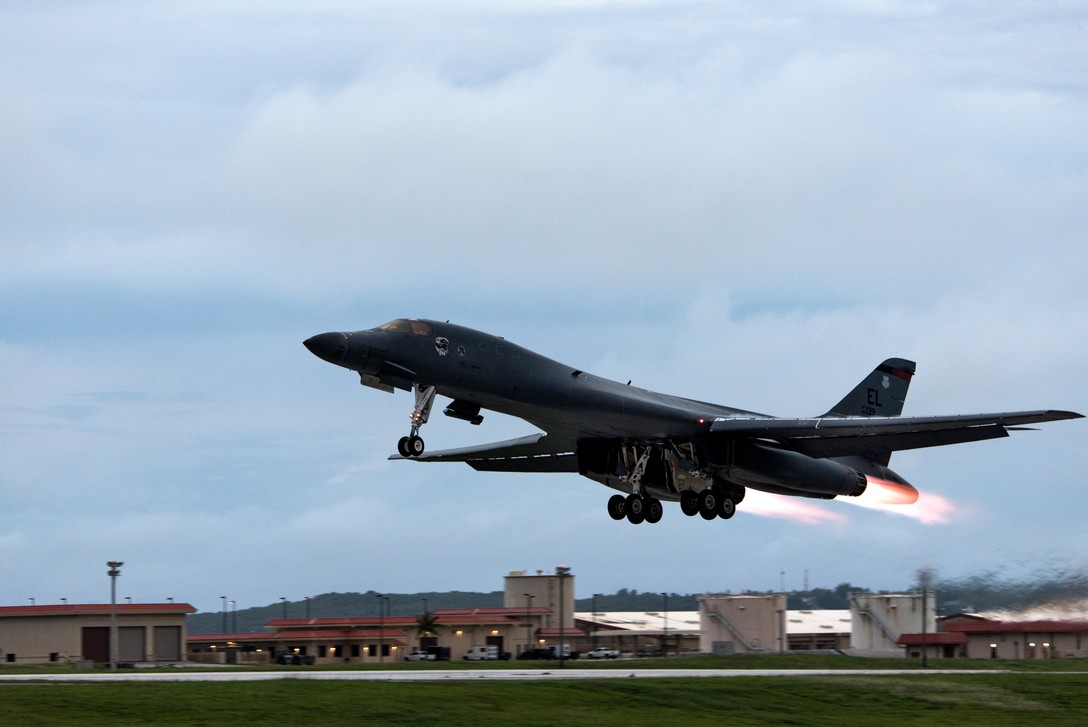
Second Lt. ___ ___, the 321st SMS deputy missile combat crew commander, and 1st Lt. ___ ___, the 321st SMS missile combat crew commander, simulate key turns of the Minuteman III weapon system during a Simulated Electronic Launch-Minuteman test inside the launch control center at a missile alert facility in the 90th Missile Wing’s missile complex, Neb., April 11, 2017. (U.S. Air Force photo/Staff Sgt. Christopher Ruano) SELM tests use actual equipment in the field to make sure the equipment in an LCC and an LF can work.
Came across a great resource on nuclear armaments as I browsed the web looking for some particular information. The book is Physics and Nuclear Arms Today (Readings from Physics Today)
It has lots of articles from the late 1970s through 1991. Reason I bought the book is for one specific article in 1983 dealing with US and Soviet nuclear forces. A table within that article was updated with a detailed inventory of strategic weaponry as of 1990. Several posts will discuss the 1990 inventory in detail.
Likelihood of destroying a hardened missile silo
A graph in one article paints a picture of the likelihood that specific missiles would destroy a hardened target.
The US Minuteman silos are built to withstand 2,000 pounds of pressure per square inch (PSI).
The y-axis on this graph is peak overpressure presented on a logarithmic scale. The y-axis is the distance from the target in meters, with the scale also logarithmic. There are gentle curves on the graph for various sized weapons: 1kt, 10 kt, 100 kt, 1mt, and 10 mt. Scaling with logs produces an odd graph – instead of the equal distant positions being increasing digits (1, 2, 3, 4, 5), each increase in the graph of one position is a power of ten (1, 10, 100, 1,000, 10,000). For things with extremes, logs produce smooth, understandable curves. With both scales on a log, the curves for varying weapon are equal distance apart.
One can look up the expected overpressure at a target for a particular weapon yield and CEP. Keep in mind this is circular error probable, which means 50% of the weapons would hit closer and 50% would hit further away. Thus, the results would be an average damage.
There is a horizontal line on the graph at the 2000 PSI point. This would be the overpressure at which a Minuteman silo would be destroyed. The very top of the graph, ranging from 5,000 to 10,000 PSI is shaded, which indicates the blast would throw out dirt from the crater sufficient to cover the target with at least 12 feet of dirt. Very tip-top of the chart means there would be 30 meters (98 feet) of dirt covering the target.

So what are the results? Graph indicates that Poseidon, Trident I, and SS-N-18 at their CEP distance would only generate around 100 or 300 PSI and thus not destroy a missile silo.
A Minuteman II at CEP distance would generate just over 2,000 PSI and therefore would destroy a hardened target 50% of the time.
An SS-18, SS-19, or Minuteman III would easily destroy a hardened silo at their CEP.
The Trident II and MX would generate well beyond 10,000 PSI on the target and also bury the target in a deep pile of dirt.
There is a line for cruise missiles drawn from about 3,000 PSI up to 20,000 or 30,000 PSI. That means cruise missiles would easily destroy a hardened target. Many cruise missiles would also bury the target with anywhere from 4 meters up to 30 m. of dirt.
The conclusion, at least to me, is as early as 1983 the overwhelmingly vast majority of U.S. Minuteman missiles would be destroyed by Soviet missiles. This conclusion is supported by another graph in the book which shows the number of missiles expected to survive an attack over time. Graph is small and hard to interpolate, so I won’t describe it further.
Part 2 describes the concept of equivalent megatons, mentions new systems in development, and the estimated CEPs of various weapons.